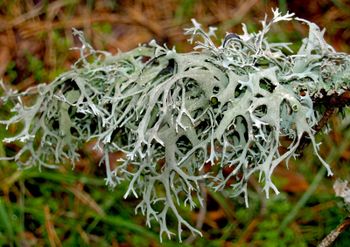Treemoss
From Wikiwel
Other Names : Pseudevernia furfuracea, Lichen furfuraceus L., Borrera furfuracea, Evernia furfuracea, Tenorea furfuracea, Physcia furfuracea, Parmelia furfuracea
Treemoss is the lichen growing on pines and firs and has a pronounced turpentine odour that is valued in perfumery.
Special Precautions of Treemoss
- Not to confuse with Oakmoss
- Allergy : The European Union became concerned that up to 3% of the population experienced severe contact reactions to Oak Moss in fragrances. It had long been recognised as an issue in forestry. The allergens are identified as atranol and chlortatranol. On 2 August 2017, the EU published a regulation prohibiting their use in cosmetic products. Perfume manufacturers were given time to adapt their products, with phased dates to the full ban on the European market.
Health Benefits and uses of Treemoss
- Since ancient times recognized and exploited in traditional remedies for treatment of external wounds, burns, gastritis, cold, asthma, tuberculosis, etc. in humans and animals. For instance, the medicinal use of the lichen Pseudevernia furfuracea was well documented in an old tonic for intestinal weakness, a foreign drug imported to Egypt from Europe, a popular 15 th century drug "Lichen quercinus virdes" (a cocktail of Evernia prunastri, Pseudevernia furfuracea and Hypogimnia physodes) in Europe, a decoction for respiratory complaints in Andalucia (Spain), an antiasthmatic, anticatarrhal and hypotensive drug in the region of Pallars (Spain) and a healing cream with clay for wounds, eczema and hemorrhoids in Kutahya Province (Turkey) (Bilgin et al., 2012;Guvenc et al., 2012).
- Antioxidant and antibacterial activities. Pseudevernia furfuracea extract exhibited the best antioxidant power, as well as the highest total phenolic content. The results also demonstrated that all studied extracts have antibacterial effects against only Gram-positive bacteria, especially against MRSA strains, with the highest activity was presented by the extract of Pseudevernia furfuracea
- Used in traditional medicine in Turkey as a treatment for wounds, eczema and hemorrhoids.
- respiratory
- The antioxidant, antimicrobial and antibiofilm activities of the two lichen species from Familia Parmeliacea (Platismatia glauca and Pseudevernia furfuracea) have been demonstrated. The antioxidant properties of Pseudevernia furfuracea were significantly stronger than the antioxidant properties of Platismatia glauca. Pseudevernia furfuracea demonstrated more potent antimicrobial and antibiofilm activities than Platismatia glauca. Antioxidant, antimicrobial and antibiofilm agents detected in the investigated lichens extracts could be valuable for the prevention of pathogens in food industry, medicine and phytopharmacy.
